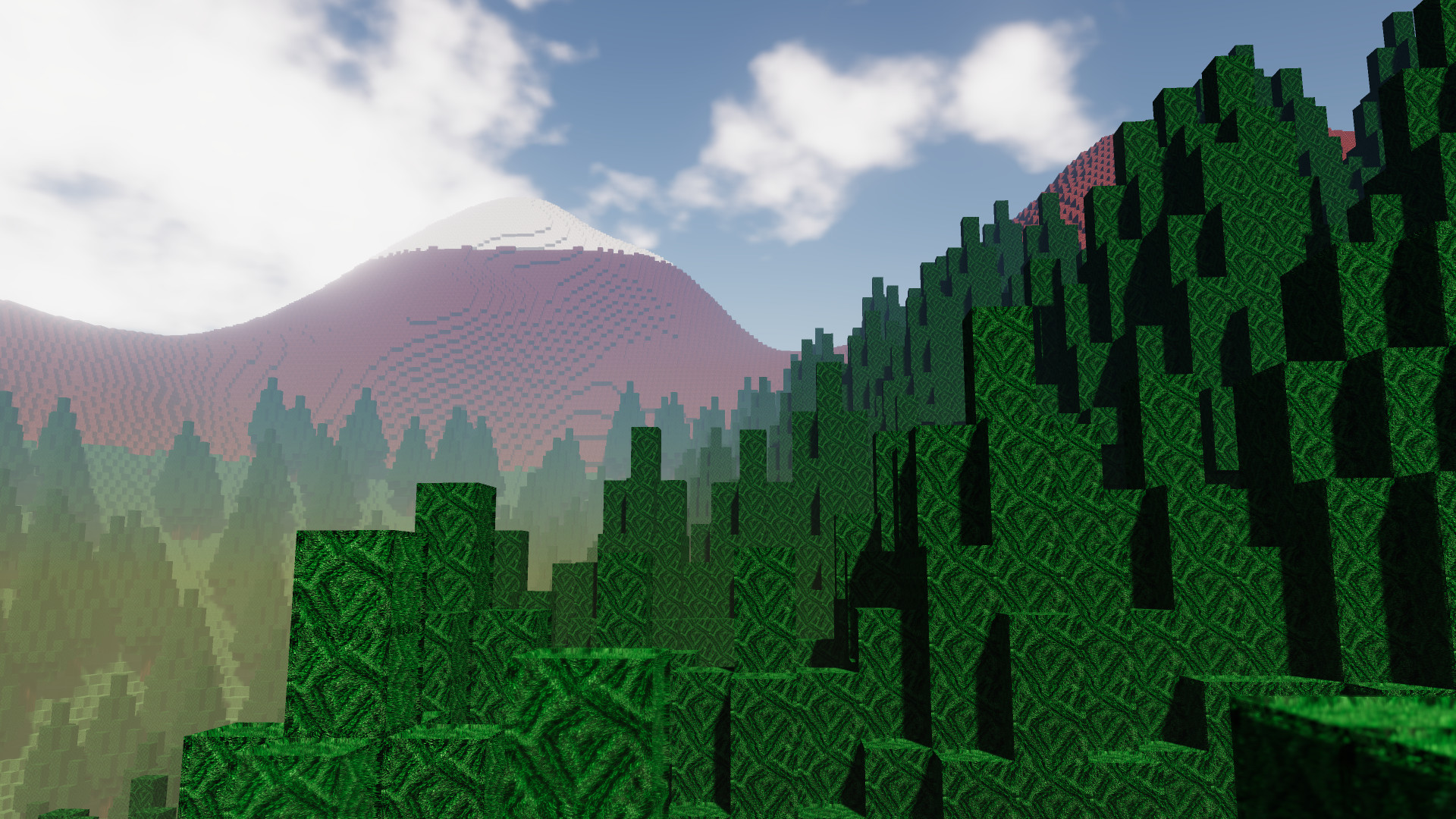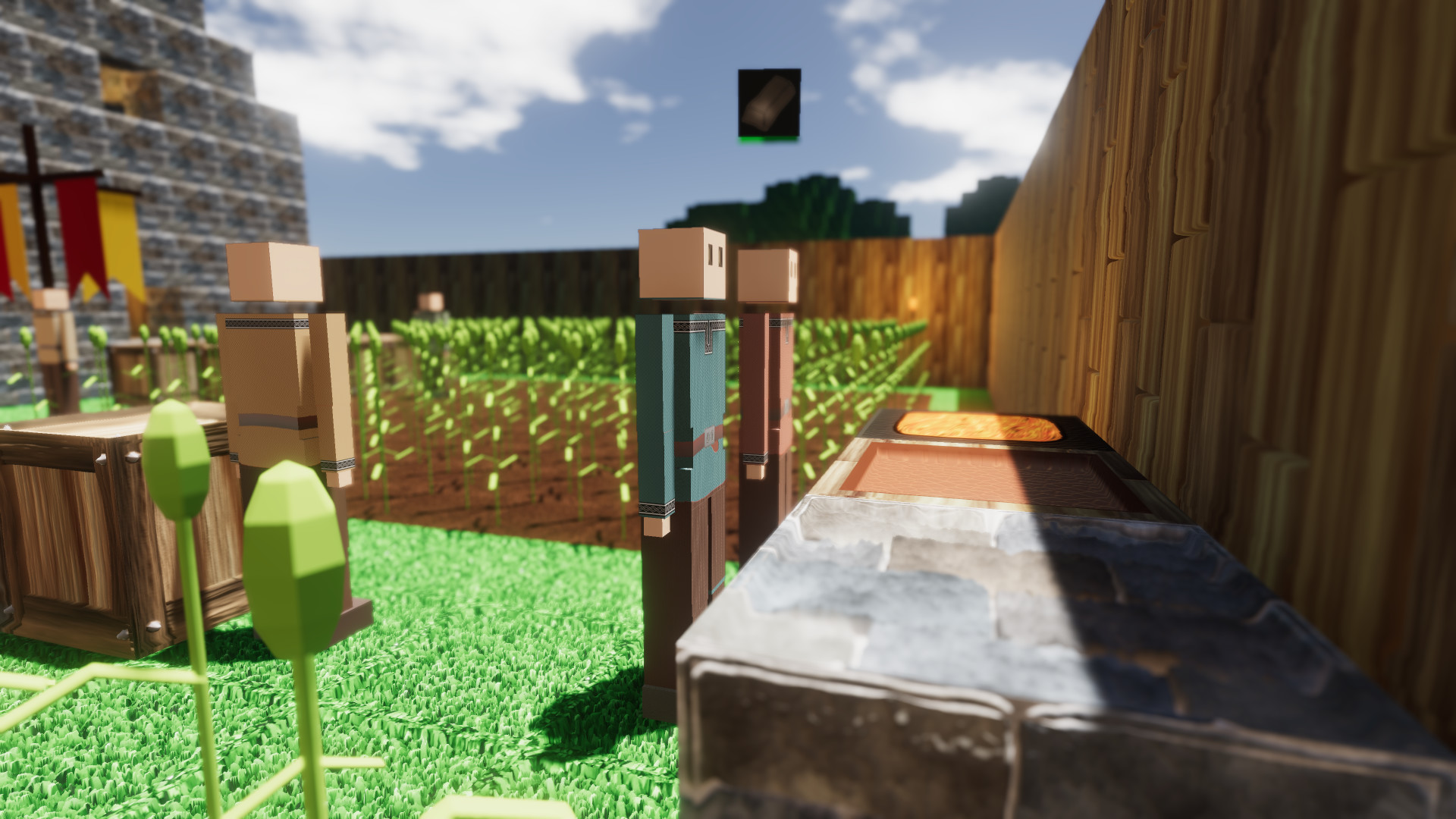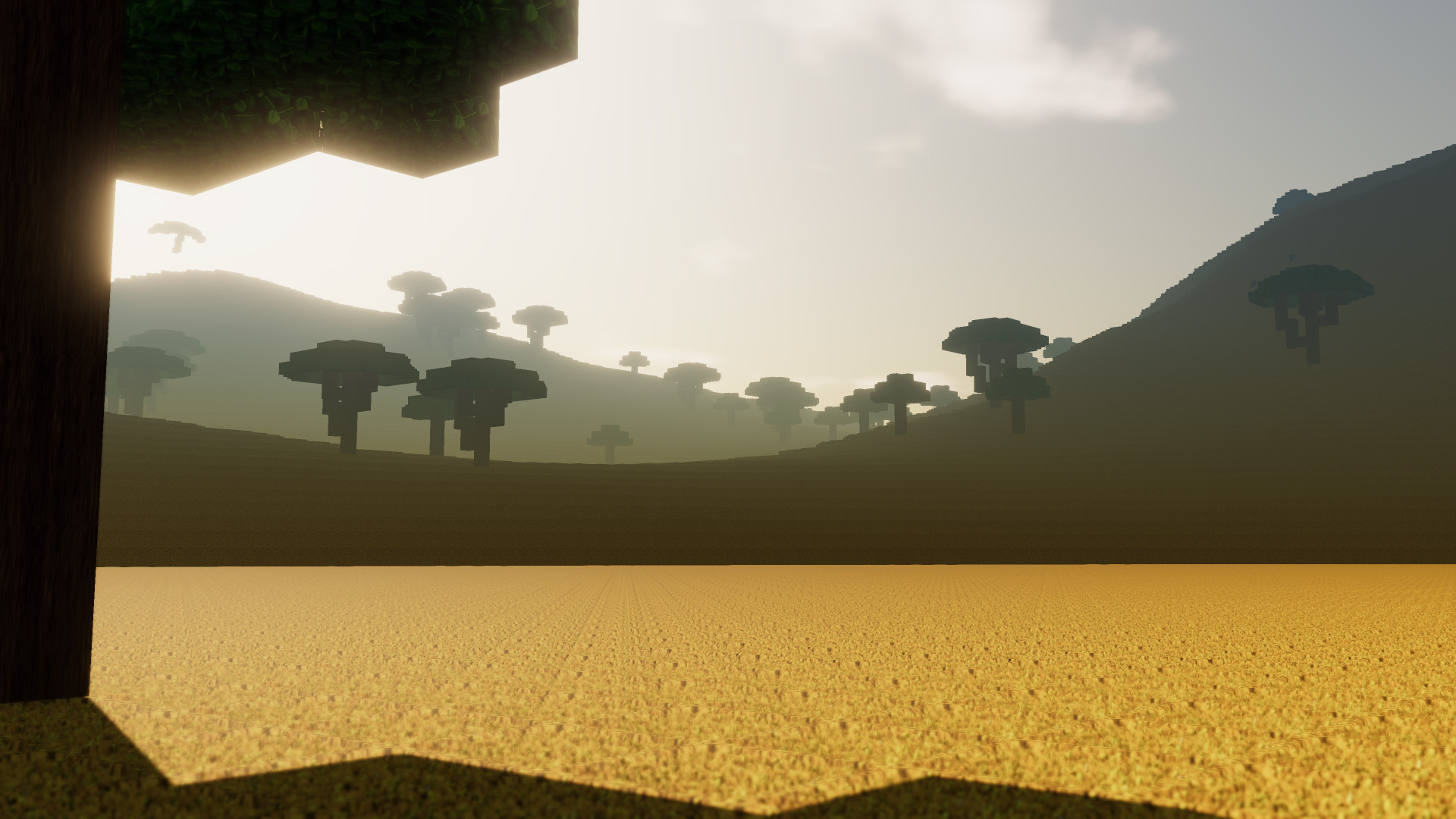- Multiplayer support: play with friends and strangers!
- Advanced pathfinding: colonists and zombies will find their way in the world you've build. They will dynamically navigate stairs, bridges and tunnels.
- Explore a world with realistically placed biomes. A giant jungle in the center of the world, surrounded by savannas, deserts and temperate biomes. Two polar regions in the far north and south.
- Support for textures and language packs created by players
- Dynamic lighting and eye adaptation
- Voice your suggestions and be part of the development of Colony Survival!
 Lagoon's world used in these screenshots and the video
Lagoon's world used in these screenshots and the video
Lighting has changed quite dramatically! Here is a before/after video:
https://youtu.be/d_i8hXLc-EU
Last month, we published a pretty long video featuring the winners of the Builders Contest. There are many different shots of those worlds in the video, but theyre pretty much all filmed during the middle of the day or in the night. I deliberately avoided sunrises and sunsets. They look pretty impressive with the landscape, but I felt that they didnt work well with the towns and buildings - they made everything look very dark/red/yellow.
Another problem I noticed was the excessive strength of the torches and lamps placed by players. In the middle of the day, they were still casting bright yellow/orange light on the buildings around them.
It felt quite wrong that I had to avoid large parts of the day cycle to make the game look great. So we decided to update the lighting! It looks quite different now. Sunsets and sunrises are brighter in general, and the yellow-red effect associated with them lasts much shorter. In the old version, the effect lasted for many in-game hours, which doesnt make any sense.

To simulate morning dew, there is a new fog effect in the valleys, which helps to bring some of the drama back. And weve dimmed torches and other player-built lighting during the day, to make towns appear less orange.
Cloud Sync
More technical explanation of the lighting changes below, but other major news first: Colony Survival now supports Steam Cloud Sync! It will be automatically toggled on for worlds made in 0.10.2 or later, but it has to be manually enabled for pre-existing worlds. These worlds will be uploaded to the Steam Cloud, and automatically downloaded wherever they are missing from your Colony Survival install. Convenient if you switch from PC to laptop or Steam Deck, a lifesaver if your harddrive or entire PC suddenly fails.

In-depth with Lighting
When we had to figure out lighting during the full day-night cycle for the first time, it was probably 2014. We had little experience and hadnt put much thought into it. I remember thinking that sunsets had deep, dark long shadows, and that dark shadows are pretty much the same things as night, right? So when the sun sets, shadows get longer until they cover everything in darkness, which we then call night. Sunrise is the reverse process.
It took embarrassingly long for me to properly witness a full sunrise in real life and fully comprehend whats actually happening. Its actually bright outside for a pretty long time before the sun becomes directly visible. Indirect sunlight is bounced through the atmosphere and makes things pretty bright before that happens.

When you can see the sun directly for the first time, the sunlight has to travel through the atmosphere for a very long time before it hits your eyeball. Which means that a large percentage of it has already scattered away and bounced around. As a consequence, when the sun is close to the horizon, you actually dont witness deep shadows. The direct sunlight is weak and the scattered light that is indirectly bouncing around is relatively strong.
Around noon, when the sun is in its highest position, sunlight is way less disrupted by the atmosphere. This makes the direct sunlight much stronger than the indirect light thats bouncing around, leading to deep, dark shadows.
Our old lighting didnt follow these rules, and went straight from deep sunset shadows to night. These deep shadows were also very yellowish, leading to a pretty weird, unnatural and unappealing look for many structures. The new settings should improve this.
The best solution would be full raytracing, but thats a very computationally intensive solution that is still not 100% practical, so weve got to approximate it as best we can.

Another problem is that our eyes absolutely do not register light objectively. They constantly adapt to the world around us. Two things that have the same brightness might look completely different to us, depending on the circumstances.
Lux is the unit of measurement for brightness. Bright sunlight is measured at 111,000 lux. A sunrise or sunset on a clear day only measures 400 lux. A candle generates roughly 10 lux, and a full moon 0.25 lux.
Our eyes will adapt to both bright sunlight and a full moon. When adapted to 111,000 lux sunlight, a 10 lux candle barely even registers. But when adapted to 0.25 lux moonlight, a 10 lux candle can visibly illuminate an entire room!
Such extreme differences and the adaptation between them arent present in Colony Survival. Which meant that torches that look realistic in the night, also turn cities orange in the middle of the day. The more I looked at it, the more it annoyed me.
So Zun added a system that reduces the lighting of torches and other player-placed lamps during the day, and increases it again during the night. Thats not how it works in real life, but this too seems to be a better approximation than the old system.
Feel free to share your opinions about the changed lighting with us! We might need to tweak it a little more. The previous blog has instructions on how to change the lighting settings yourself at the end.
Veel plezier met de update!
Reddit // Twitter // YouTube // Website // Discord
Minimum Setup
- OS: Ubuntu 12.04+. SteamOS+; 64-bit
- Processor: Intel Pentium G620 (2.5 Ghz dual core) or equivalentMemory: 2 GB RAM
- Memory: 2 GB RAM
- Graphics: Intel HD Graphics 5000. 1280x720 display
- Storage: 300 MB available spaceAdditional Notes: Work in progress: new features may raise the bar. optimizations may lower the bar
Recommended Setup
- OS: Ubuntu 12.04+. SteamOS+; 64-bit
- Processor: Intel i5-2300 (2.8 GHz quad core) or equivalentMemory: 4 GB RAM
- Graphics: Nvidia GTX 750 or equivalent. 1920x1080 display. supporting openGL 4.2+Network: Broadband Internet connection
- Storage: 1 GB available spaceAdditional Notes: Work in progress: new features may raise the bar. optimizations may lower the bar
[ 6411 ]
[ 7148 ]
[ 3628 ]
[ 4850 ]






































